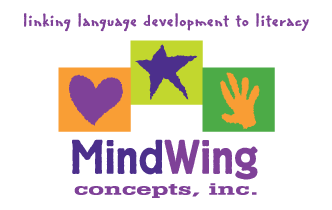Secure Checkout. FREE SHIPPING for Continental U.S. Orders over $60.
Menu
-
- Home
-
About Us
-
The Approach
-
Linking Language & Literacy
-
Professional Learning
-
Learning Resources
-
SHOP
-
Blog
-
- About MindWing
- Our People
- Contact Us
- Your Account
- Login
-
United States (USD $)

Secure Checkout. FREE SHIPPING for Continental U.S. Orders over $60.
Tool Tuesday: Summer Study Series, Part 2–Thinking about CRISP weather?
by Sean Sweeney July 28, 2025 3 min read
 Well, if you wanted a hot summer and wouldn’t take this one, I’m not sure what to offer you! About halfway through the season, we are probably all starting to look forward to cooler, CRISPer days.
Well, if you wanted a hot summer and wouldn’t take this one, I’m not sure what to offer you! About halfway through the season, we are probably all starting to look forward to cooler, CRISPer days.
Speaking of, the American Speech‑Language‑Hearing Association (ASHA)’s CRISP Committee (Clinical Research, Implementation Science, and Evidence-Based Practice) has developed a series of nine modules on evidence‑based and best practices assessment, which would serve as a great self-guided study activity as we think about the fall!
The site, hosted on ASHA’s Teaching, Learning & Research (TLR) Hub, grabbed my eye since it relates to narrative as a critical aspect of any speech-language assessment, and in particular, MindWing’s tools for supporting these processes, including Story Grammar Marker®.
The modules are designed to support educators and clinicians with rigorous, research‑informed practices for speech, language, and hearing assessment. Each module includes a video presentation, downloadable slides, and an application activity. The modules cover concepts in evidence-based assessment, purposes and types of assessments, issues in validity and bias, and guidance in selecting assessment tools and making clinical decisions in the evaluation process.
Within the scope of this self-study resource, I was most interested in seeking its take on qualitative/criterion-referenced and dynamic assessment in narrative. In my roles as a private-practice-based evaluator and clinical instructor, I still frequently encounter written assessments that have ONLY included standardized assessments, which by nature neglect to fully characterize how the individuals perform when the structure of a standardized test is stripped away and they are asked to formulate or retell a story. Within the module on Types of Assessment, Trina Spencer provides a great overview, encompassing standardized, but also criterion-referenced and dynamic assessments, in their role in helping to design intervention and monitor progress (see MindWing’s great tools in this regard). When discussing static vs. dynamic assessments, Ms. Spencer emphasizes the way that dynamic assessment can more effectively capture and support differences in home, community, and learning environments, and thus be more soundly rooted in cultural, socioeconomic (and might I say also, neuro-) diversity.
Ms Spencer goes on to describe the critical element of a dynamic assessment, designed to measure learning potential, as including the teaching of a skill or strategy:

I’d like to encourage you to view this module and others in the series, but I’ll leave you with some placement of these key ideas in context of specific assessment activities, because applying Story Grammar Marker® to your evaluation can, of course, be your source of explicit teaching of skill and strategy.
Consider the following dynamic activity possibilities:
- Elicit a verbal telling of one of the wordless books in the Frog, Where are You? Series (Mayer); provide a visual and verbal model with an SGM® story map, then repeat with a subsequent book in the series.
- Ask the student to view a Simon’s Cat video and tell the story to a teacher or peer (creating a naive listener condition that may result in more pragmatic elaboration). Then make sure “you’ve got the story right” by analyzing the story in a scaffolded activity using SGM®’s Magnet Set. Review the icons with the student in a later session and see how they apply them to a different Simon’s Cat video.
- Combine criterion-referenced and dynamic assessment by using the CUBED free narrative assessment. Many of the early grade level assessment activities start with a sample story, which could easily be used to break down and teach the narrative elements within, before completing the main retell activity with the student. I also feel like the expectation to include specific grade-level vocabulary words in the retell could be stated more explicitly to students, as my students have almost never included these words, and thus did not gain those score-able points.
I hope you are enjoying your summer as we segue into August!
Sean Sweeney
Sean Sweeney, MS, MEd, CCC-SLP, is a speech-language pathologist and technology specialist working in private practice at the Ely Center in Needham, MA, and as a clinical supervisor at Boston University. He consults with local and national organizations on technology integration in speech and language interventions. His blog, SpeechTechie (www.speechtechie.com), looks at technology “through a language lens.” Contact him at sean@speechtechie.com.
Leave a comment.
Comments will be approved before showing up.
